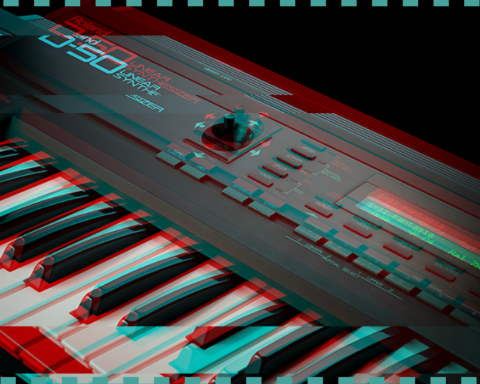Born in Hamburg and based in Berlin, German DJ and producer Alex Ridha is best known for recording under the guise of Boys Noize. Ridha got involved in music from an early age, performing DJ club gigs at just 15 years old. In the more than 20 years since, he’s been performing at clubs and festivals around the world. Ridha produces driving, pop-inflected, dance-oriented electronic music at a steady clip. He’s collaborated on tracks with Kelis, The Black Eyed Peas, and South Korea’s BIGBANG as well as remixed Depeche Mode, David Lynch, and Daft Punk. All the while, Ridha’s been running his label, Boysnoize Records (BNR), which he founded in 2005.
Making Noize with the TR-707
Ridha employs a wide range of tools to craft his tunes. These include various software plugins, Eurorack and modern outboard hardware, and plenty of classic gear as well. Ridha has spoken about his affinity for his vintage JUPITER-6 and TR-808. Furthermore, one of his more storied early tracks—the stomping 2010 tech-house track “1010”—was built around a custom, modified TR-707.
“This is my beloved 707,” the producer told Future Music during a 2013 studio visit. “It’s a custom-made one from Diabolical, from the States. For every single instrument—bass drum, snare, toms—they put in different filters, bit crush, and pitch as well. This one I sync to the 303. I’ve used it on a couple of tracks already, like my acid track ‘1010.’ It’s called actually ‘1010’ because 707 and 303 added together. It’s cool, like especially on snare and toms, it sounds really cool with that effect.”
"Ridha complements the thumping, distorted kick with a host of familiar but altered variations of the 707’s recognizable snares and toms."
Mod Life
Indeed, the hardware modifications help give “1010” a rather unique sonic fingerprint. Ridha complements the thumping, distorted kick with a host of familiar but altered variations of the 707’s recognizable snares and toms. The screaming, ramping 303 filter gives the track an acidic edge, and a mangled vocal chop peeks out of the mix throughout. It’s a track produced in a sort of ’90s, “peak hours” style. “1010” is a fitting precursor for the style of music with which Boys Noize has since become synonymous.
Exploring New Terrain
Last year, Ridha dipped his feet into two new technological realms. For one, he started a Boys Noize Twitch channel. He used the platform to produce an album with input from fans, using viewer polls to determine which tracks he should release and what to title them.

Additionally, 2020 saw the release of Ridha’s first proper hardware collaboration. He designed it along with fellow producer Baseck and New York-based hardware producer Steady State Fate (SSF). The result is a Eurorack module called Triptych—a multi-effects and sound source distortion unit. It features an internally re-routable signal path capable of producing mangled, screeching tones.
"'1010" is a fitting precursor for the style of music with which Boys Noize has since become synonymous."
A Track for the Club
Still, the 707 has always played an important place in his workflow. As Ridha told a blog in 2010: “‘1010’ was the first track I did with those machines,” he said. “Friends like Housemeister, Erol, or Mr.Oizo heard the track—they were going crazy for it.” So, what was the secret to the track’s instant appeal? “It’s another track made for the club, because you can only really feel the power of it on the dancefloor.”






